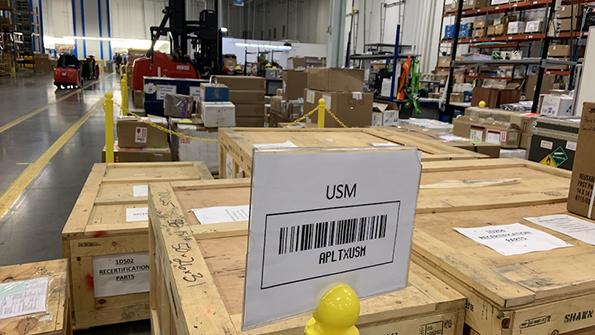
When was the last time you saw an unoccupied row on a long-haul flight or even had an empty seat next to you? The days of curling up across economy seats on international flights are gone. Airlines have improved their load factor management as travel demand has rebounded and continues to climb. While it makes travel less comfortable, it is a more efficient use of aircraft.
With revenue passenger-kilometers (and load factors) continuing to increase, already tight MRO capacity—especially for engines—will probably become tighter. Given these capacity constraints in MRO, the industry is taking action.
As British Airways Chief Technical Officer Andy Best notes, “We’ve started to look at what we need to do in-house, which, to be honest, I don’t want to do, but when it starts impacting the airline’s operational support, we’ve had to act."
Airlines are also acting on location choices for MRO. “We see the increasing attractiveness of nearshoring maintenance not just in airframes but also in engines and components—airlines are looking for that,” says Benjamin Moreau, senior vice president at AFI KLM E&M. “Of course, there is an economic dimension to this but also a sustainability one,” he notes.
MRO incorporates sustainability by repairing parts—and demand for used serviceable material (USM) has increased as parts prices have escalated and some become simply hard to find.
Aeras Aviation in Dubai, which is seeing more demand for engine USM, cautions about rising repair costs and turnaround times. These two issues “will be the main driver to material supply issues over the next couple of years until we hopefully see some stabilization or new MRO vendors, increased capabilities and workforce being introduced to help the flow of parts,” says Aran Tindall, director of asset trading and engine programs.
On a positive note, supply chain pain is causing companies to communicate better with each other by sending demand signals to more accurately alert what will be needed. The next step is understanding the condition of the assets coming into the shop. As Craig Gottlieb writes in his Viewpoint, “gaining even incrementally better insight into configuration, time, cycles and condition can take precious days and weeks out of maintenance intervals.” However, he adds, “Without establishing the technology, relationships, processes and contracts that underpin this insight, even the most generous increases in capacity will fail to generate their maximum returns.”
This is a key point. Just as the airlines are becoming more diligent about load factors, the MRO industry must ensure it is driving the technology, processes and innovation needed. Simply building more hangars is not the way to go.
In case you missed it, last issue’s excellent feature by Lindsay Bjerregaard on artificial intelligence in MRO is a must-read for considering MRO technology advances (October Inside MRO, p. MRO18).





